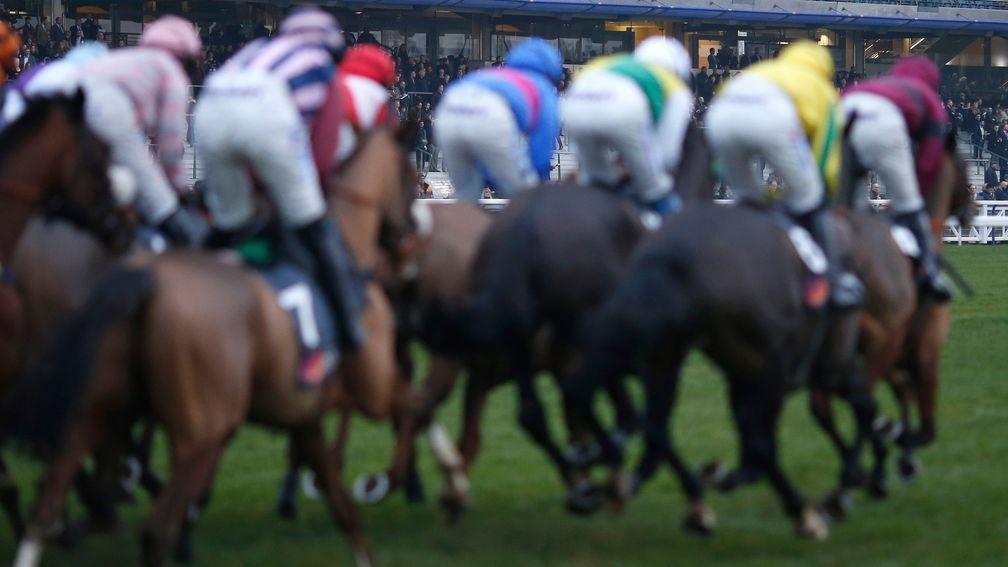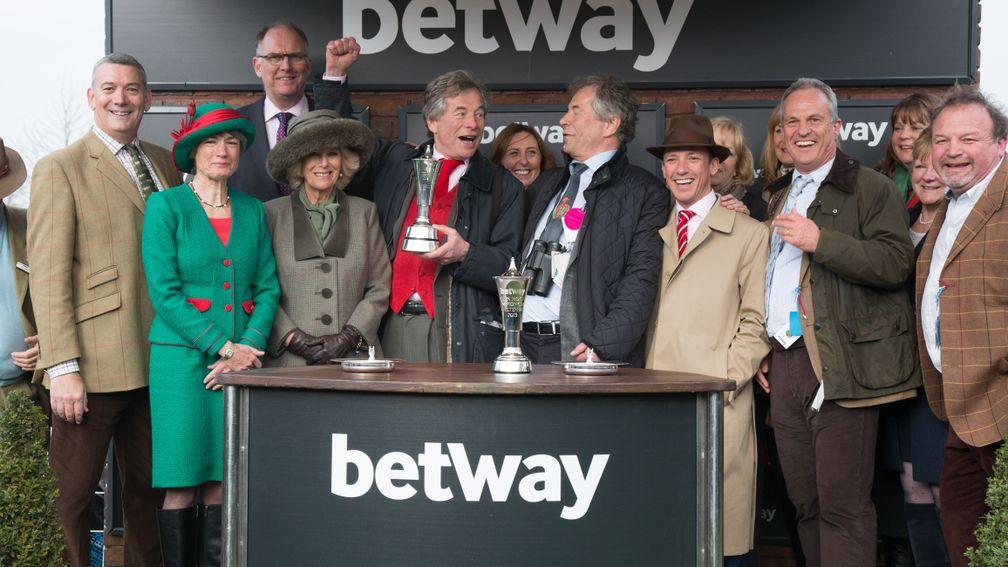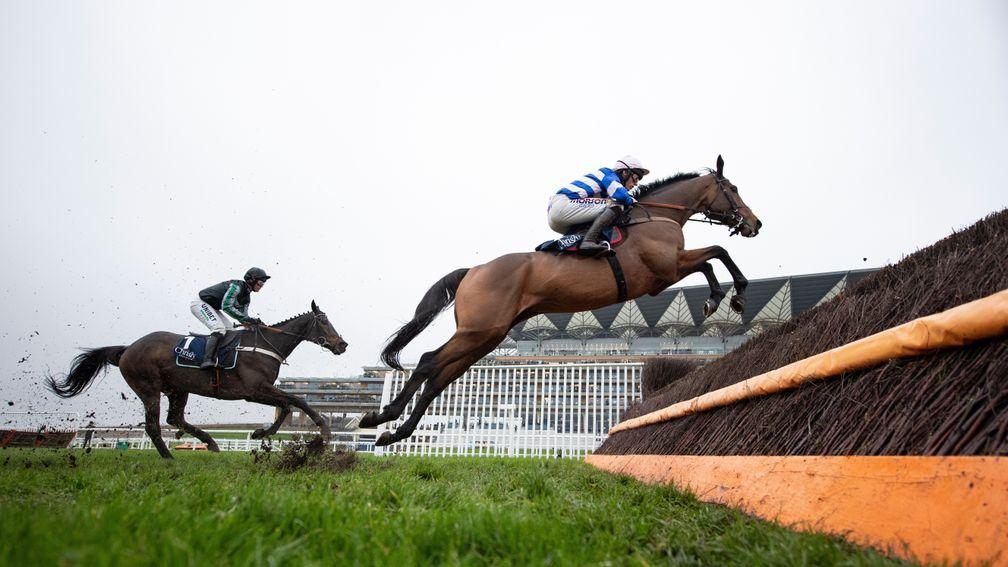Video blackout shows clear lack of vision from Racecourse Media Group

Sometimes you find yourself shaking your head in sheer disbelief, such as when you hear about the latest absurdly excessive and utterly needless attempt by Racecourse Media Group to stop anyone filming anything at any of the courses under its banner.
The video in question was so harmless, all 51 seconds of it. It started with a shot of the Cheltenham parade ring before the cross-country race 11 days ago and then panned in on a group of owners from the Foxtrot Racing syndicate looking suitably excited.
Then along came Sam Twiston-Davies, riding their runner Solstice Star, who showed what a great bloke he is by issuing an upbeat and in-depth view of how the horse had been schooling and what a chance he had.
Anyone remotely interested in racing would have found it insightful and interesting. But RMG, which manages the picture rights for more than half the British and all the Irish tracks, swiftly contacted Foxtrot and told them to take the clip down because it violated its rules governing on-course filming.
Foxtrot, despite the disappointment of seeing Solstice Star pull up before the finish, took it on the chin with nothing like the fuss some of us would have created in the face of such pettiness but the syndicate’s manager Dan Abraham did point out: “It’s a shame that a syndicate member can’t appear to use the video to express their enjoyment of their day.” Quite right.
This is not a one-off incident, not by a long chalk. RMG would be hopelessly negligent if it failed to take steps to protect its picture rights, because if it didn’t people could simply film races from the stands, stream them live and the sport would risk losing huge, vital sums.
But while it is entirely justifiable to take all necessary measures to prevent commercial piracy of live racing, RMG’s desperation to clamp down on filming of any kind on its racecourses ranges from the clumsy to the heavy-handed to the downright potentially damaging for the sport’s long-term prosperity.
It needs to grasp the clear difference between the races themselves and what goes on for the rest of a raceday, when it should be far more relaxed about filming.
It would point out that Foxtrot Racing is not simply a group of old pals getting together and buying a horse between them, but a commercial organisation, but so what?
This video was not an advert, merely a taste of what it is like to be part of a syndicate, and if we don’t do what we can to encourage people to invest in ownership in this way we are missing a trick.
RMG appears to take the view that if you let one person film some atmospheric shots from the course you will create a free-for-all, but it should be encouraging a free-for-all provided it does not involve filming the actual races or various random people queueing up to record set-piece interviews with connections.

If I owned a racecourse I would want social media to be flooded with footage on the days we raced, from excited syndicates chatting to their jockeys to people having fun in bars to racegoers placing their bets. It is free advertising and an effective way of getting people to understand what a brilliant day out racing represents.
I would also encourage sponsors to maximise the value of their outlay by shooting as much video as they liked, but again that is the opposite of what RMG courses do.
Instead, sponsors are told in no uncertain terms they can only put out anything if it is filmed using RMG’s equipment under its terms, which entails a short slot from a fixed position well before racing commences.
As a result, bookmakers who spend large sums sponsoring big races are prevented from evangelising about the day ahead to their millions of customers unless they abide by the strict RMG restrictions.
Thus, at a recent Cheltenham Festival, an RMG bigwig was standing in a bookmaker’s corporate entertainment facility, with a glass of Chablis in one hand and a lobster in the other, both paid for by the bookmaker in question, telling a representative of said bookmaker that he could not film a video with the firm’s sponsored jockey.
Equally ridiculous was the attitude to Sky Sports News broadcasting from the Cheltenham Festival (before Sky launched its own racing channel). It was met with stringent restrictions and a strict pre-noon deadline, yet it should have been given free rein to do what it liked until the terrestrial and dedicate broadcasters went on air because its coverage would have heightened viewer engagement with the action and boosted the afternoon audiences.
Not all courses whose rights are handled by RMG are completely inflexible on this matter, and it should be noted Ascot was far more progressive in its attitude before it switched to Sky Sports Racing. But it is time for a rethink and it would be nice to think new Jockey Club Racecourses chief executive Delia Bushell, with her broadcasting background, might decide the fight for her rights should be restricted to what happens between those two sets of running rails.
Thankfully, the owners of the rights to the non-RMG courses take a far more mature view and appear to acknowledge that if people want to broadcast non-racing footage from their courses on their websites and social media feeds they are doing the sport a favour.
Leading owner John Dance even pointed out in the wake of the Foxtrot Racing kerfuffle that Arc sometimes sends him content he is able to use on his digital assets.
The Racing Post, along with other traditional media companies, is also caught up in the RMG dragnet, meaning we cannot engage and evangelise our significant audience from the course as fully as we would like to, which is to nobody’s benefit.
The day racing needs to worry will come when nobody is interested in filming from courses, and RMG’s current rigid policy strikes me as an effective way of increasing the prospect of that scenario becoming real.
Altior price highlights a concern with ambassadorial roles
Cyrname and Lostintranslation won the weekend’s big races, while Altior and Bristol De Mai lost nothing in defeat as both duels lived up to expectations and then some.
What was not to like? Well, one thing. I backed Altior a few days beforehand because I thought he had fewer questions to answer, and I have no absolutely problem accepting I was wrong and did my money accordingly.
But when I checked the latest state of the market on Friday evening I noticed Unibet were a standout 8-11 Altior, and momentarily I felt a pang of concern because they sponsor the star chaser’s trainer Nicky Henderson.
Rational thinking quickly kicked back in. Yes, Unibet pay Henderson to wear their branded clobber and give them his latest views on his horses but, while the money they pay him is undoubtedly pleasant to receive, the legendary trainer is not going to start secretly telling Unibet’s traders to lay one of his horses because he has been working like a donkey, and nor is the bookmaker going to jeopardise its licence by getting involved in such nefarious activity.
So what’s the problem? Perception. I know enough to know Unibet were (rightly as it turns out) top price on Altior simply because their experts thought it was a potentially profitable stance to take.
But most punters are a suspicious breed and those who know Henderson has a commercial relationship with Unibet might well have tried to put two and two together and come up with an answer that made them suspect something was afoot.

That their answer would have been five is beside the point. The sport needs to avoid creating unnecessary suspicion and yet that is an inevitable consequence of bookmakers paying jockeys and trainers for their thoughts.
The ambassadorial arrangements are not an entirely bad thing by any means. Bookmakers shell out big money on these deals, as we have found out plenty of times when trying and failing to use various racing professionals as paid columnists, so it is good that trainers and jockeys who are in demand can earn a few extra quid.
And these expertly ghostwritten columns and blogs and slickly produced videos help racing reach a bigger audience and give lie to the notion bookmakers do nothing to promote the sport.
But the fundamental nature of a relationship whereby the thoughts of a trainer or jockey appear on the same website or app as the prices of the races they are involved in means there is always the potential for punters to be unnecessarily suspicious on those inevitable occasions when the odds suggest the bookmaker in question takes a dim view of its ambassador’s chances.
Today's top sports betting stories
Follow us on Twitter @racingpostsport
Like us on Facebook RacingPostSport
Published on inBruce Millington
Last updated
- Vaccine offers hope that sport will open its doors and is something to celebrate
- DeChambeau's approach doesn't appeal to me, but his price certainly does
- We'd do well to pay greater respect to life's uncertainties
- Bruce Millington: celebrate the range of racing options rather than cutting back
- Villa are clearly on the up but theirs odds oversell the chance of a title miracle
- Vaccine offers hope that sport will open its doors and is something to celebrate
- DeChambeau's approach doesn't appeal to me, but his price certainly does
- We'd do well to pay greater respect to life's uncertainties
- Bruce Millington: celebrate the range of racing options rather than cutting back
- Villa are clearly on the up but theirs odds oversell the chance of a title miracle